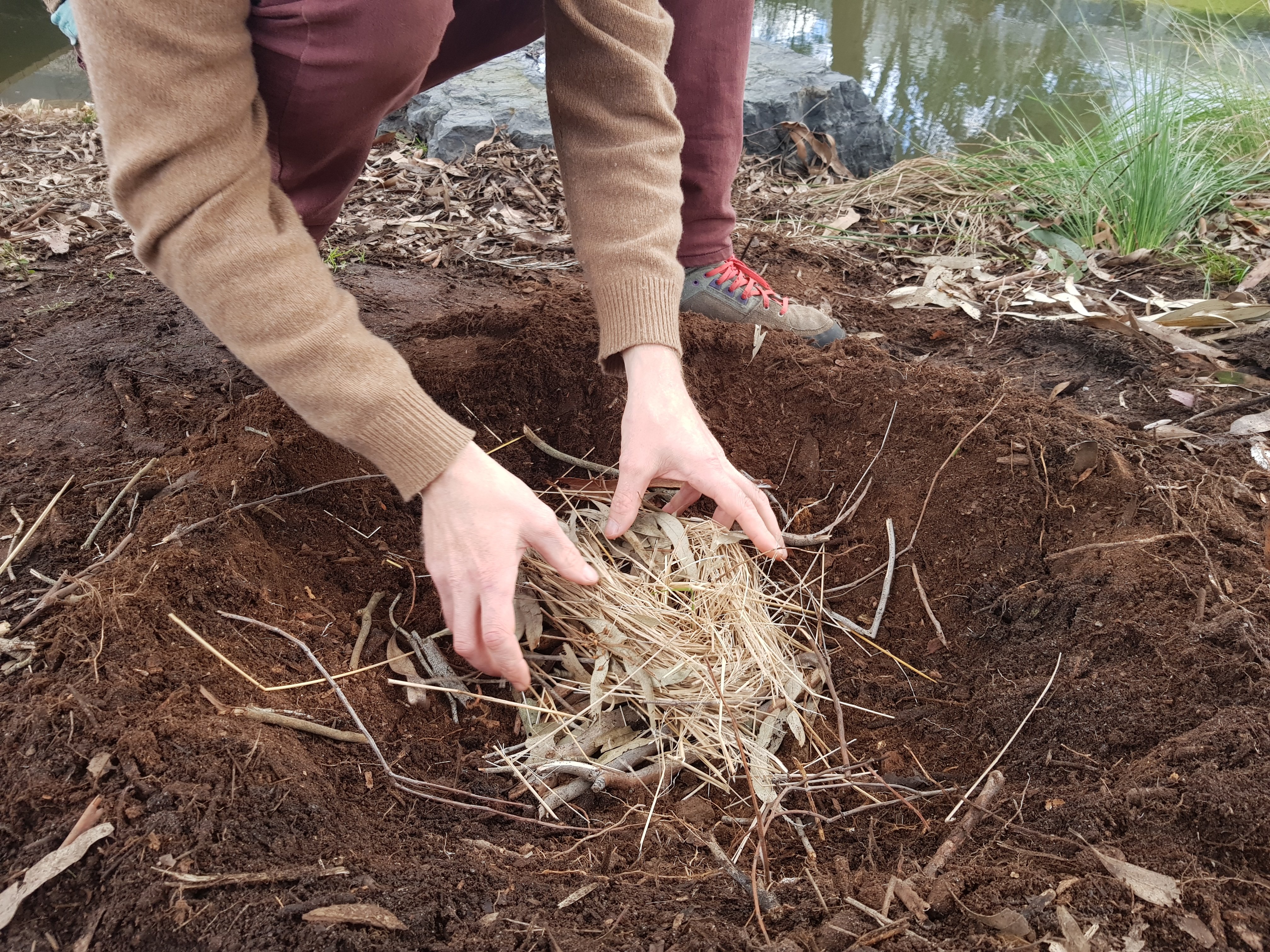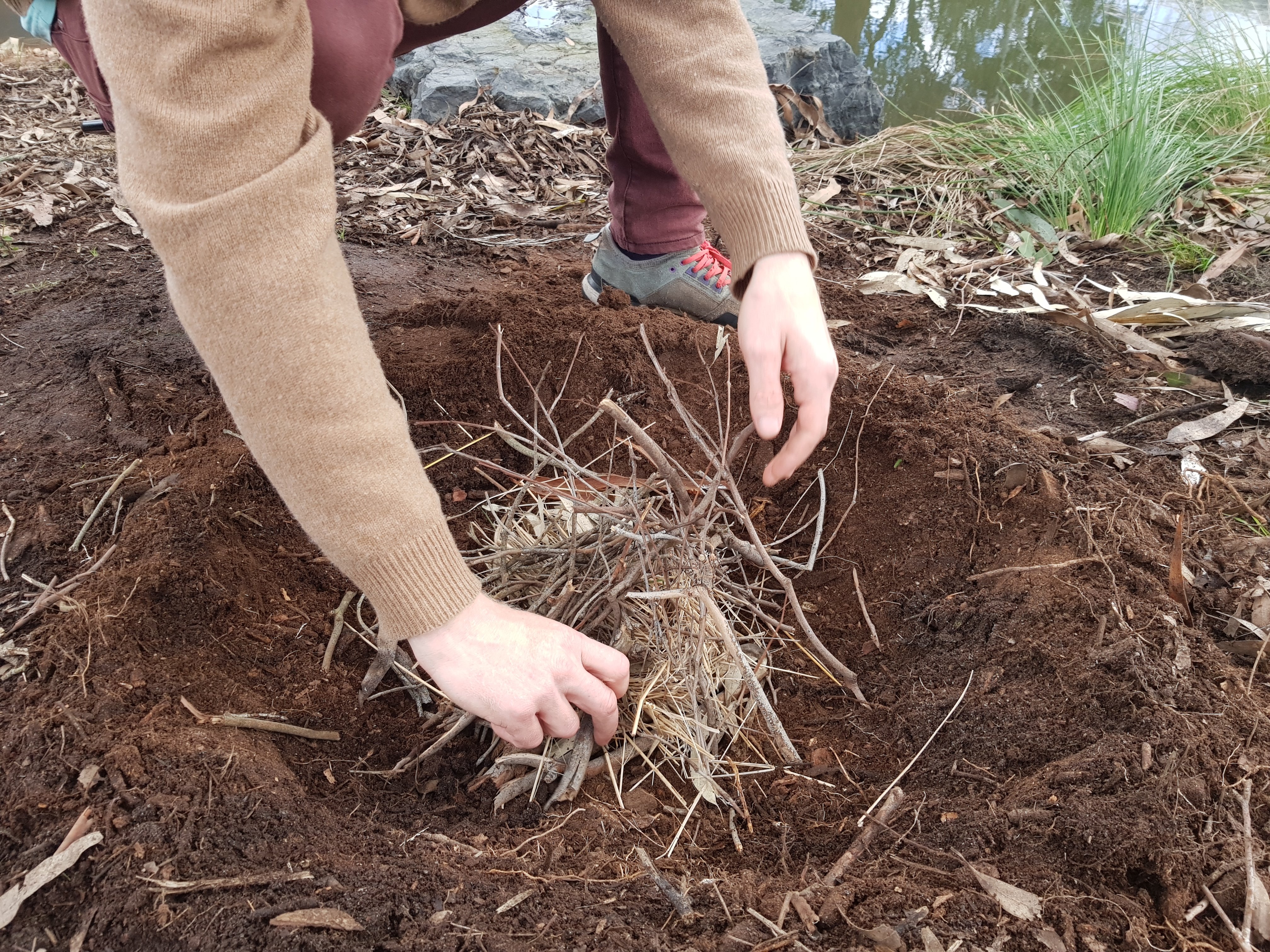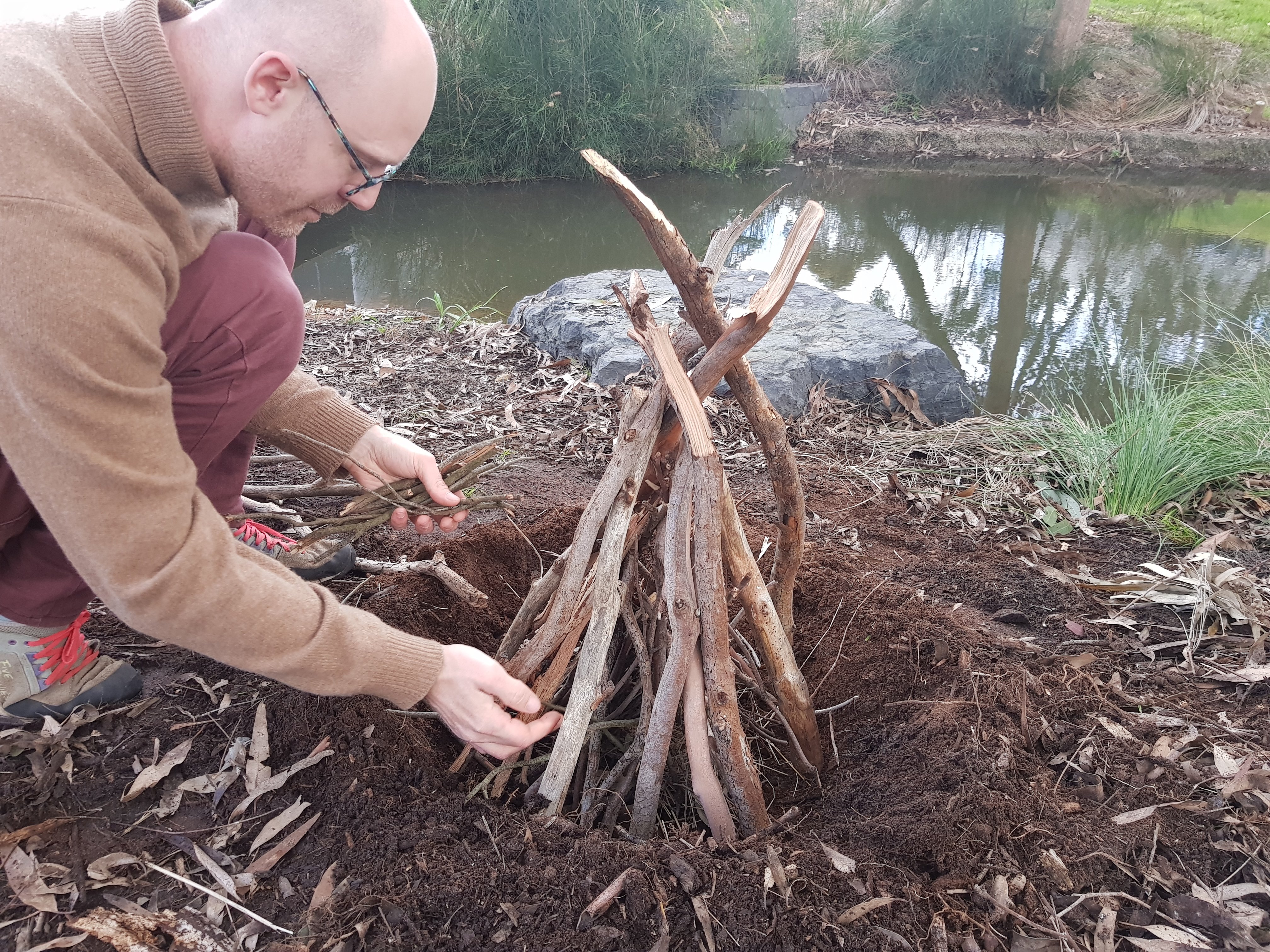Relaxing after a day's hike, bike or paddle is even more rewarding with a campfire. In places where firewood is abundant, The Outdoor Education Group loves to use campfires for cooking the evening meal and warding off the chill of the night; they also provide the perfect setting for sharing stories and creating life-long memories. For us, the campfire is a beloved and rich tradition and presents endless opportunities to develop universal skills in young people. As enjoyable as campfires are, each stage of building, managing and extinguishing your campfire must be approached responsibly to minimise damage to the natural environment and reduce the risk of wildfires.
CONNECT AROUND THE CAMPFIRE
Campfires provide a connection with nature, a time of reflection and a wonderful ritual ending the day. Moments spent around the campfire often stay in our memories for years to come.
Sitting and talking around the campfire helps create a sense of belonging and acceptance within a group and allows students to explore social cohesion and concepts around communal living. The fire itself often draws our attention, reducing feelings of scrutiny and fixed awareness on a speaker. Because a shared fire lowers our defences in the best of ways, we feel more comfortable sharing our thoughts - conversations are more profound, stories are more exciting and we're hoping to learn a few new things about the people we're with.
Teaching students how to make and manage a campfire empowers them through unique opportunities to exercise self and social management, risk assessment, collaboration, planning and negotiating, decision-making and communication techniques. Additionally, students feel responsibility and ownership of their time outside.
Building a campfire together promotes environmental stewardship and action in young people – it is the perfect opportunity to explore the strength and fragility of the Australian bush. We like to share our knowledge on local plants, how they contribute to combustion and the consequences of bushfires on land and ecosystems.
MAKE A CAMPFIRE LIKE A PRO
In the Australian outdoors, a bushfire is an ever-present danger. Building and managing a campfire should always be approached with the following considerations:
STEP 1
The best place to build a campfire is in an existing fire ring or firepit at an established campsite; this minimises the impact on the environment. Be sure the firepit is far from tents and there are no overhanging branches or leaves nearby - clear the area of all debris.
STEP 2
Begin by gathering dry bark, leaves, twigs, sticks and larger branches. You need to gather enough to not only start your fire but keep it going for the evening. Your materials must be dry. Remember the tip "dead and down" - to limit your impact, only collect dead wood fallen from a tree. Another good tip is to touch the end of the stick against your cheek. If it feels dry, it's good; if it feels wet or cold, discard it as it will be full of moisture.
The dry bark and leaves will be your fuel or tinder. You can also add wood shavings, dry lint, and cardboard to this collection.
Twigs and sticks are used as kindling. Begin by collecting twigs matching your finger's diameter and steadily increasing the thickness of the pieces to about the diameter of your wrist.
Larger branches, which can be broken by hand, will be your firewood and form your fire's central element during its burn; be sure only to collect these from the ground. Ensure your branches fit safely inside of the fire pit or fire circle and do not fall outside of it.
STEP 3
Once you have gathered all your materials, you can begin assembling your fire. Common campfire techniques include the teepee, the lean-to, or the log cabin and are all based on the same principles. Each Outdoor Educator at the Outdoor Education Group has their own preferred technique. We will proceed using the teepee method because it's quick and easy to set up and produces a lot of heat.
Begin by placing your tinder in the centre of your firepit.

STEP 4
Circling your tinder pile, stick one end of your kindling in the ground and rest the top point of each piece against a neighbouring piece.

Start with the thinner twigs and build it out by adding the larger pieces of kindling and then the larger branches. You'll see the teepee shape form.
Be sure to leave airspace between the sticks to allow airflow to reach the fire and to access the tinder bed for ignition.

STEP 5
After doing a final check of the area to ensure no debris or hanging branches are within proximity to your firepit, you're ready to light your fire.
Light your tinder bed in several places using long reach matches to ensure your fingers are as far away from the flame as possible.
With a good mix of dry tinder and wood, you'll be able to start a fire successfully without the use of fire starters. If your fire is smoky or makes a hissing noise, the material you are using is wet. In this case, do not add any more for the same source; instead, seek our dryer material.
STEP 6
Enjoy! A campfire is a fantastic resource to raise morale after a long day. It's the perfect time to enjoy one of our most-loved camp meals – the mighty bucket lunch. Don't forget to share epic stories of the day and plan the next day's adventures!
STEP 7
When you are ready to put out your campfire, fully extinguish the fire with water (not soil). As a rule, it is safe to leave your extinguished firepit only when the coals are cool to the touch. Dig the firepit up a bit with a stick and pour more water on it, so it penetrates under the surface. Big, hot fires can burn down as well as up and the ground under your firepit could still be smouldering even if the surface feels cold.
Remember, it's not always appropriate and safe to build a fire. Always be sure to do your research on the campfire rules and restrictions of the area you'll be visiting.
The Outdoor Education Group works with schools across Australia, providing meaningful outdoor education experiences, setting challenges and enabling student growth and development. From camps, incursions, extended journeys to sequential programs and more, we bring education to life in the outdoors. Enquire today.

-3077.jpg)



